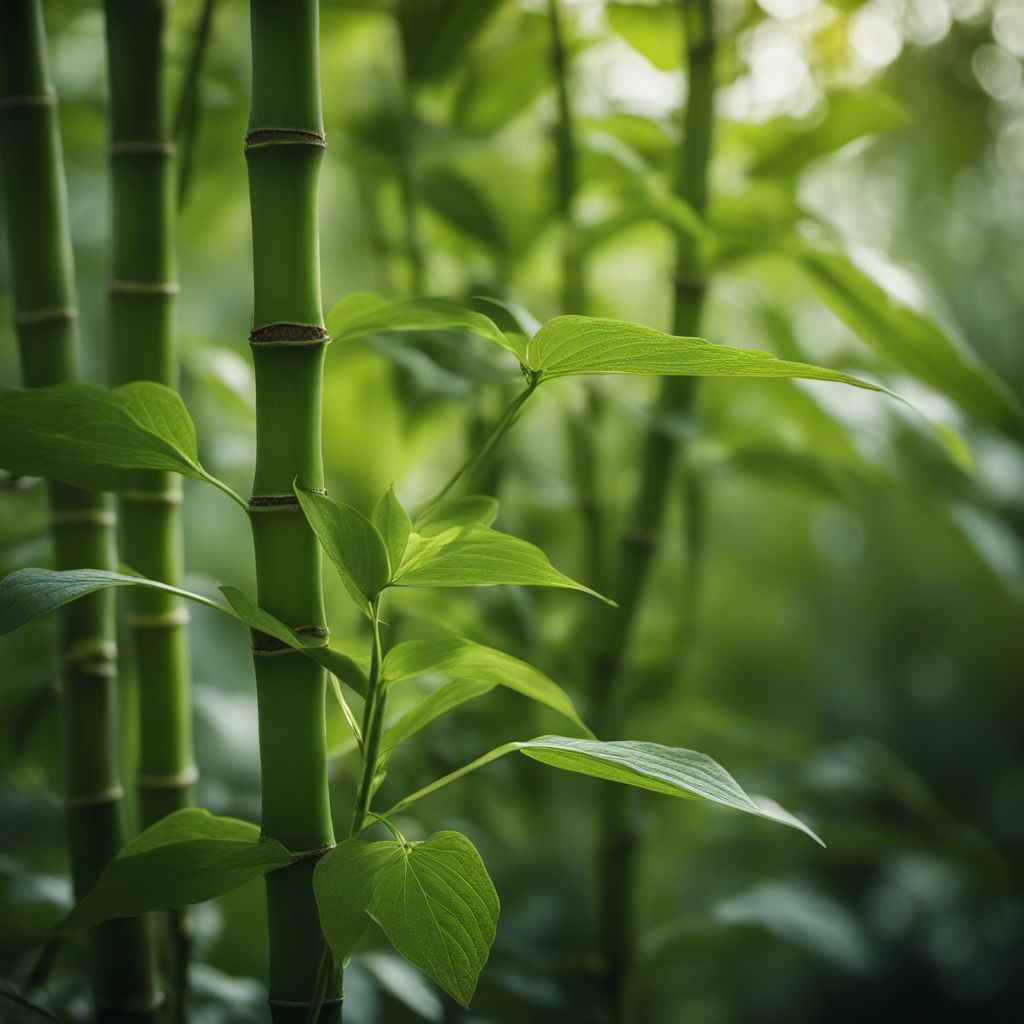
Ingredient
European bamboo
The Versatile Stalk: European Bamboo
European bamboo is a tall, perennial grass that can reach impressive heights of up to 30 feet. It has a sturdy, hollow stalk with a diameter of 1-2 inches and a pale green color. The stalks are often used in cooking, while the leaves can be woven into baskets or used for thatching roofs. The taste of European bamboo is mild and slightly sweet, with a tender yet fibrous texture.
Origins and history
European bamboo has a long history of cultivation in Europe, where it was introduced by the Romans. It has been used for centuries in various applications, including construction, musical instruments, and even as a biofuel. In culinary traditions, European bamboo has been utilized in Mediterranean and Asian cuisines, where it is prized for its versatility and unique flavor.
Nutritional information
European bamboo is low in calories and fat, making it a healthy addition to meals. It is also a good source of dietary fiber, providing digestive benefits. Additionally, it contains small amounts of essential minerals such as potassium and magnesium.
How to select
When selecting European bamboo, look for stalks that are firm and straight, without any signs of discoloration or damage. The stalks should have a vibrant green color and feel heavy for their size. Avoid any stalks that appear wilted or have soft spots. If possible, choose organically grown European bamboo to ensure it is free from pesticides or chemical residues.
Storage recommendations
To maintain the freshness of European bamboo, store it in the refrigerator. Wrap the stalks in a damp paper towel and place them in a plastic bag or container. It is best to use European bamboo within a few days of purchase, as it tends to lose its crispness over time.
How to produce
European bamboo can be grown in a variety of climates, but it thrives in warm, temperate regions with well-drained soil. It can be propagated through rhizome division or by planting cuttings. However, it is important to note that European bamboo can be invasive, so it is recommended to contain it within a designated area or use barriers to prevent its spread.
Preparation tips
European bamboo can be prepared in various ways, depending on the desired dish. The stalks can be sliced and stir-fried, steamed, or grilled. They can also be used as a natural skewer for kebabs or stuffed with flavorful fillings. The leaves of European bamboo can be used as a decorative wrap for steamed dishes or as a lining for baking.
Culinary uses
European bamboo is commonly used in Mediterranean and Asian cuisines. It is often featured in dishes such as stir-fries, soups, salads, and even desserts. In Mediterranean cuisine, European bamboo is used to make traditional Italian breadsticks called grissini. In Asian cuisine, it is commonly used in Chinese, Japanese, and Korean dishes, adding a unique texture and flavor to stir-fries, sushi rolls, and hot pots.
Availability
European bamboo is commonly available in Europe, particularly in countries such as Italy, Spain, and France. It is also cultivated in other parts of the world, including the United States and Australia.
